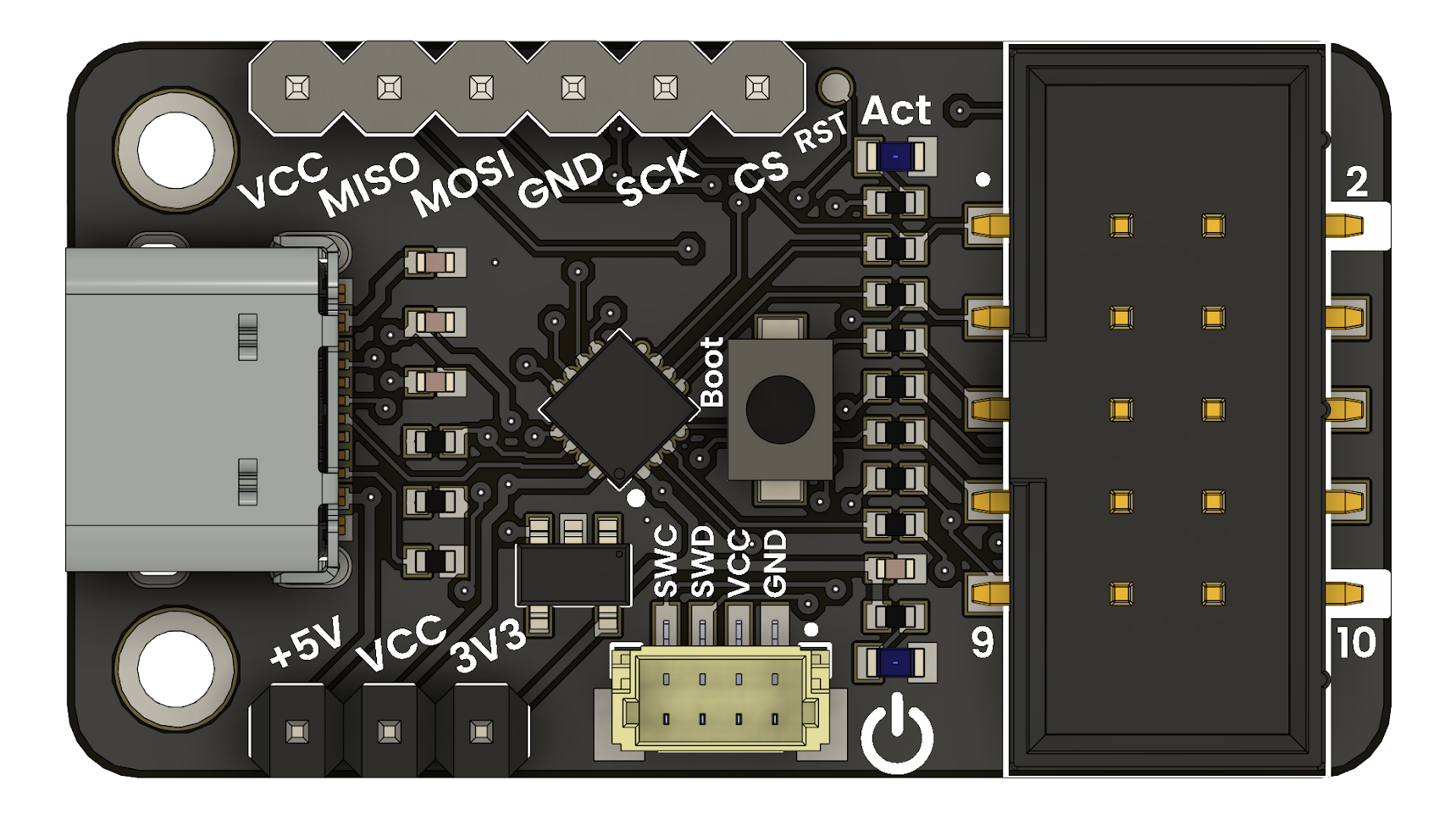Using OpenOCD#
To program your microcontroller using OpenOCD, use the following command:
openocd -f interface/cmsis-dap.cfg -f target/rp2040.cfg \
-c "init" -c "reset init" \
-c "flash write_image erase blink.bin 0x10000000" \
-c "reset run" -c "shutdown"
Supported Microcontrollers#
This guide supports the following microcontrollers:
Microcontroller |
Description |
|---|---|
RP2040 |
Low-cost microcontroller with a dual-core ARM Cortex-M0+ processor. |
STM32F103C8T6 |
Budget-friendly microcontroller with an ARM Cortex-M3 processor. |
STM32F411 |
Cost-effective microcontroller with an ARM Cortex-M4 processor. |
Selecting Your Microcontroller Target#
Each microcontroller requires a specific configuration file. This file is a script that instructs OpenOCD on how to communicate with the microcontroller. The configuration file is tailored to the microcontroller and the debugger interface.
Microcontroller |
Configuration File |
|---|---|
RP2040 |
|
STM32F103C8T6 |
|
STM32F411 |
|
PyOCD#
PyOCD is a command-line tool for interacting with ARM Cortex-M microcontrollers. It supports flashing, erasing, debugging, and low-level memory access using CMSIS-DAP, DAPLink, ST-Link, and other probes.
Basic Syntax#
pyocd <command> [OPTIONS]
You can specify the target using -t <target> or through a configuration file using --config <file.yaml>.
Configuration File#
Use a YAML configuration file to define global options:
# Misc/pyocd.yaml
target_override: py32f003x6
frequency: 1000000
log_level: info
To load this config:
pyocd erase --config ./Misc/pyocd.yaml
Commands#
Erase flash memory of the target device.
pyocd erase -t py32f003x6 [OPTIONS]
Options:
--chip: Erase the entire flash memory.--sector <ADDR>: Erase a single sector by address.--config <file.yaml>: Load configuration from YAML file.
Example:
pyocd erase -t py32f003x6 --chip --config ./Misc/pyocd.yaml
Flash a binary, hex, or ELF file to the target.
pyocd flash <file> -t py32f003x6 [OPTIONS]
Options:
--base-address <addr>: Override the base address (for .bin files).--verify: Verify flash contents after writing.--erase=chip|sector|auto: Select erase mode.--format bin|hex|elf: Force file format.--config <file.yaml>: Load YAML config.
Example:
pyocd flash firmware.hex -t py32f003x6 --erase=chip --verify
Start a GDB server for remote debugging.
pyocd gdbserver -t py32f003x6 [OPTIONS]
Options:
--port <number>: GDB server port.--telnet-port <number>: Telnet monitor port.--persist: Keep the server alive after GDB disconnects.--config <file.yaml>: Load YAML config.
Reset the target microcontroller.
pyocd reset -t py32f003x6 [OPTIONS]
Options:
--halt: Halt the CPU after reset.--config <file.yaml>: Load YAML config.
List connected debug probes and supported targets.
pyocd list
Read and write memory directly.
pyocd read32 0x08000000 4
pyocd write32 0x20000000 0x12345678
CMSIS-Pack Targets#
To add custom target support (e.g., py32f003x6), use:
pyocd pack install py32f003x6
Or add a local .pdsc file:
pyocd pack add ./path/to/PY32F003.pdsc
Example Workflow#
pyocd list
pyocd erase -t py32f003x6 --chip
pyocd flash build/main.hex -t py32f003x6 --verify
pyocd gdbserver -t py32f003x6
pyocd reset -t py32f003x6 --halt
References#
Command Help#
pyocd --help
pyocd flash --help
pyocd erase --help
